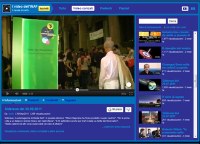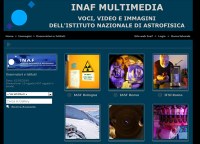Multimedia
Voice, text, video and images. To give our readers the possibility of a multi-sensory immersion in deep space. Here are the main multi-media products that INAF offers::
Every day on your desktop, the main news from the world of astrophysics, technology and more, with comments by INAF researchers. Always on the news and with a dedicated editorial staff, Media INAF is a fully registered site. You can also keep an eye on it by subscribing to the newsletter, becoming a fan on Facebook, or following us on Twitter.
A constant stream of brief clips, interviews and animations, provided by the editorial staff of Media INAF. Every week, "Sidereus", with our correspondents from the remote Universe. Also, every thirty days or so, the sky of the month, an up-to-date sky guide to help you keep track of the stars and planets. INAFTV is on-air 24 hours a day also on ASTROCHANNEL, the internal TV of the various INAF institutes.
In the multimedia gallery you can find a collection of thousands of products from audio interviews and films to photographs – all on our various activities.







